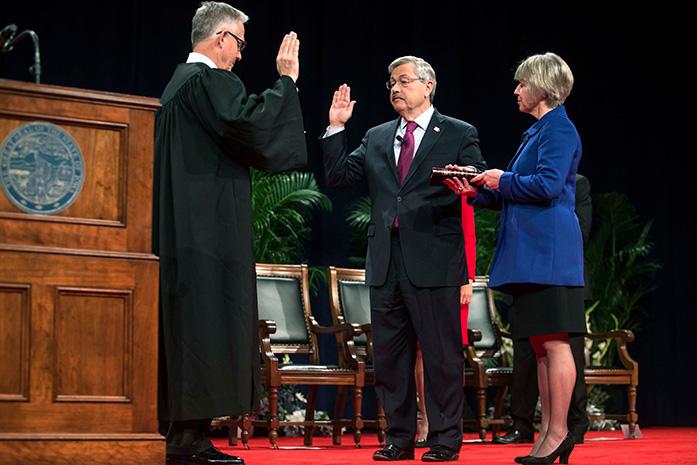As the state of Iowa looks at a projected loss of $100 million in revenues for the current fiscal year, Gov. Terry Branstad has proposed cuts in funding of the same magnitude across numerous areas of state services. The most austere of these cuts, currently slated at $34 million, will fall upon the shoulders of Iowa public education, with $25.6 million from Iowa’s public universities and another $8.7 million from community colleges.
This, when coupled with Branstad’s recently approving up to $107 million in tax breaks to a fertilizer plant as incentive to continue operations in Iowa, leads one to believe that corporate interests trump constituent interests.
It has been an alarming trend for state governments to slash higher-education funding as an easy method of plugging fiscal holes in state budgets. These holes are often created from less than ideal state tax revenue whenever local economies do not produce enough capital to be harvested by the state. Public-education cuts were most drastic in the recession years, but the practice has not waned with the recovery of the economy.
In a 2014 report detailing the crisis in public-university funding, the Center on Budget and Policy Priorities stated that “these sharp increases in tuition have accelerated longer-term trends of reducing college affordability and shifting costs from states to students.
Over the last 20 years, the price of attending a four-year public college or university has grown significantly faster than the median income.”
The report goes on to say that most states, Iowa included, had funded public universities well below pre-recession levels up to 2014. Given that Iowa has consistently fallen short on the state Board of Regents’ funding requests, resulting in yet another tuition hike just last year, this trend has yet to be rectified.
Essentially, when state officials organize a budget around an economy that ultimately under-preforms, it is us, the students, who must bear the brunt of the burden.
A cut in public-university funding is a divestment from the young minds that will inherit the institutions that drive Iowa’s economy.
Student debt, which sits close to $30,000 per average graduating Iowa student, according to CollegeInSight, is an objective problem that millennials must face. To inflame and exacerbate the crisis each moment the state needs to tighten its belt is not only a divestment in young minds, but a divestment in Iowa’s future.
As students, we have been promised that the tools allotted to us through higher education will bring forth a prosperous and attainable future. These tools, of course, come at a cost. Yet, it seems each year the odds against us are stacked just a bit higher and with every tuition hike comes another moment of disillusion.
On the subject of Branstad’s budget recommendation, the regents published a statement that they “understand the revenue constraints the state is facing for the current fiscal year” and that they plan to “work with our institutions to make the required reductions in a way that has the least effect on students.”
Though, given the track record concerning cuts to higher education, the “least effect” these cuts will have on students will likely still include a heftier tuition. Rather than working with an institution that looks to wring students dry like wet, student-loan soaked rags, we ought to demand the funding institutions such as the University of Iowa deserve. Regent President Bruce Rastetter and the regents, along with UI President Bruce Harreld, owe it to the students of Iowa to do everything in their power to oppose another occasion of incompetent funding and demand the fiscal support needed by Iowa’s universities.
The Daily Iowan Editorial Board will not condone another instance in which the regents and UI administration stand idly by while the state reaches into the pockets of an already thinly stretched student population.



